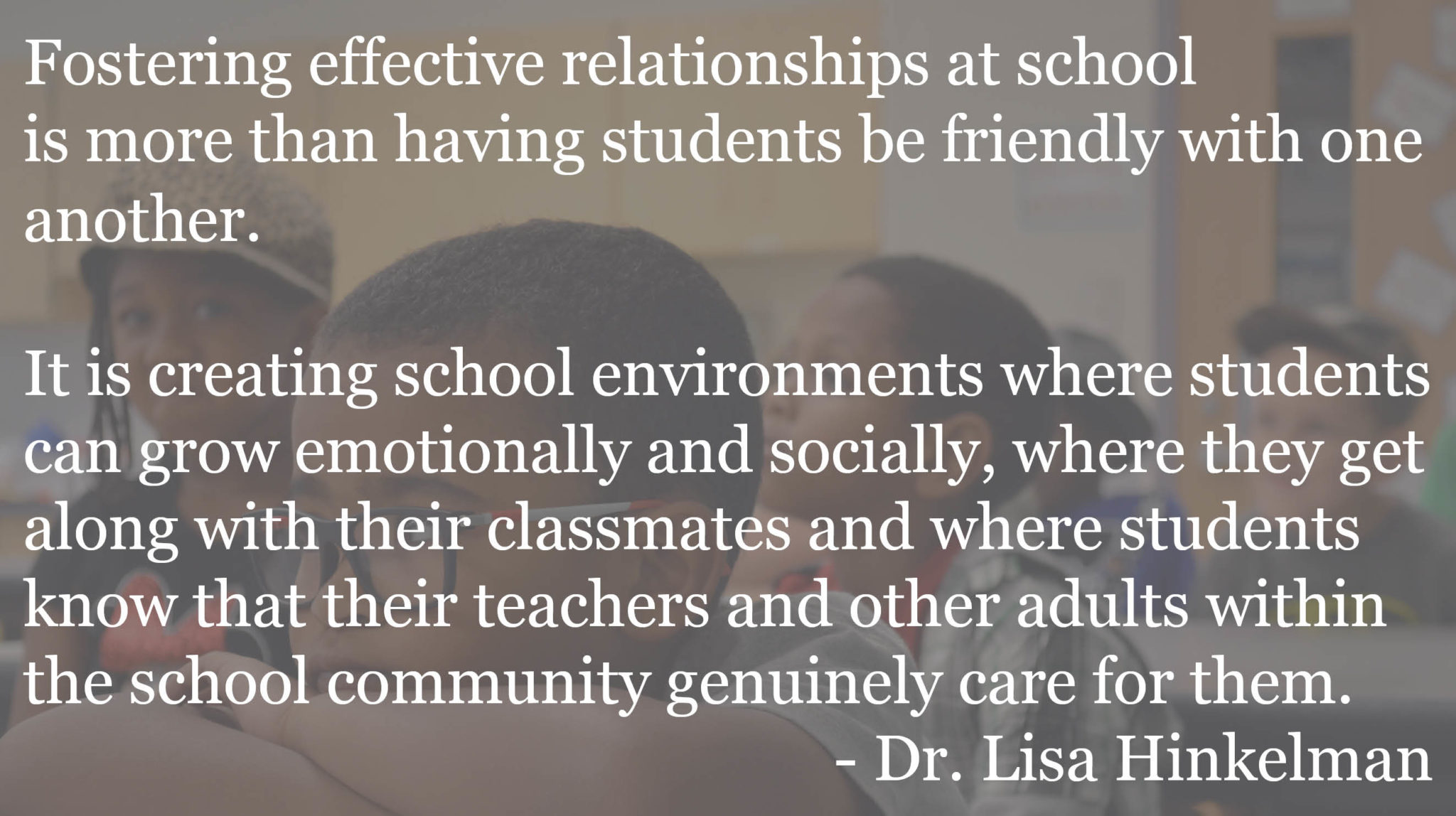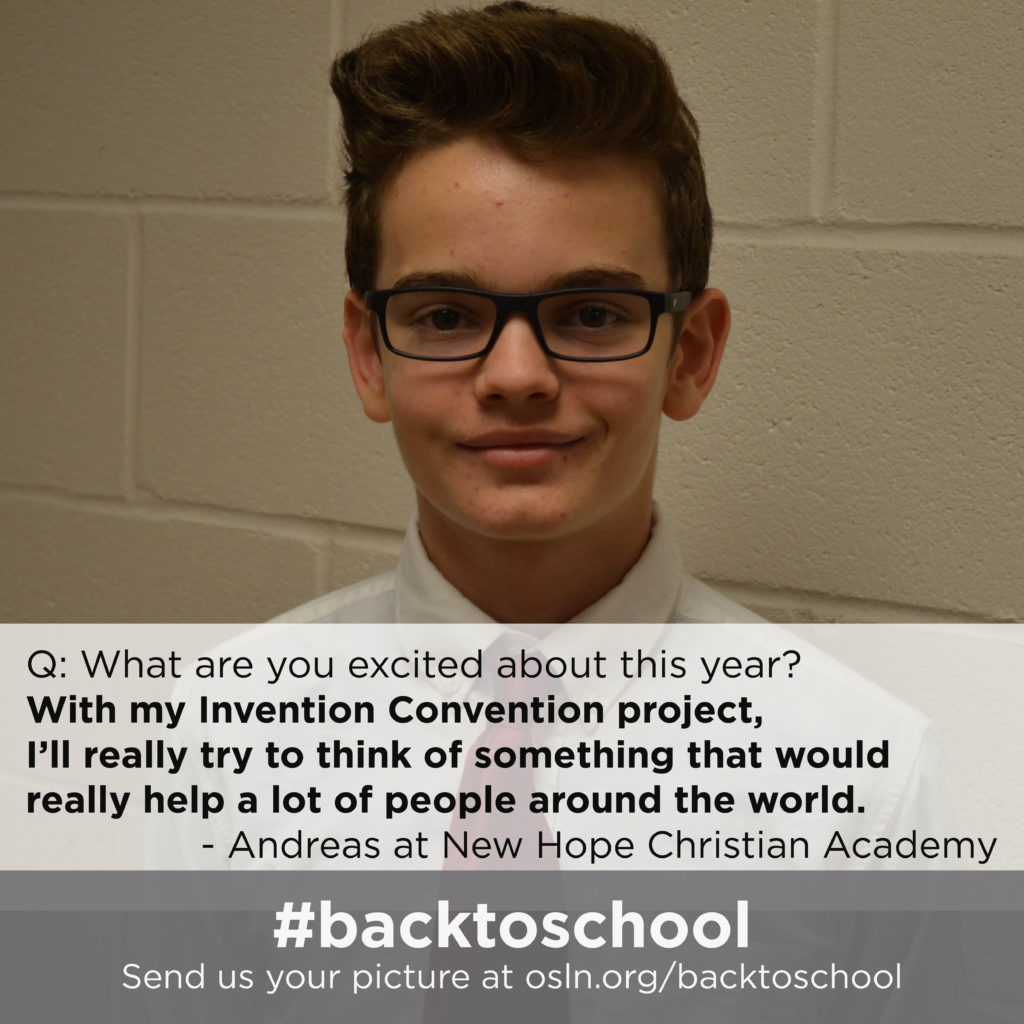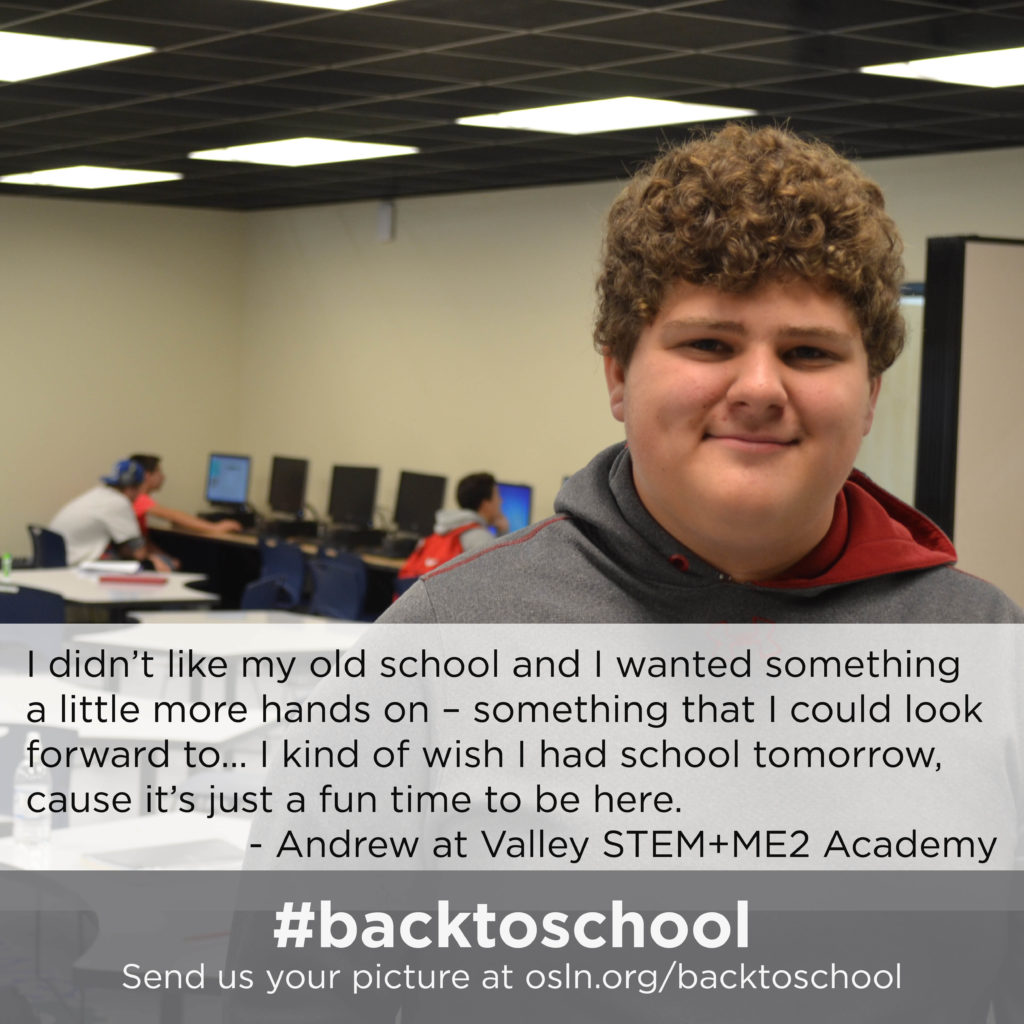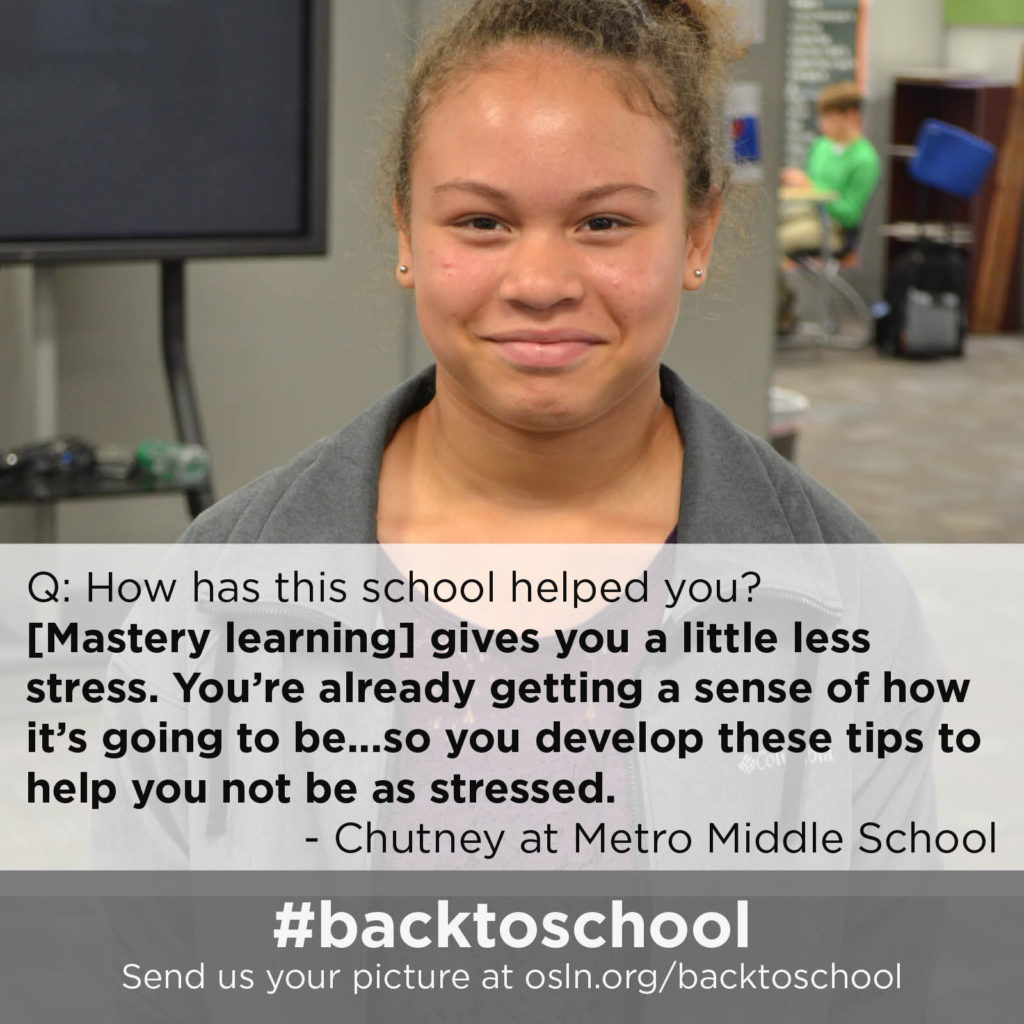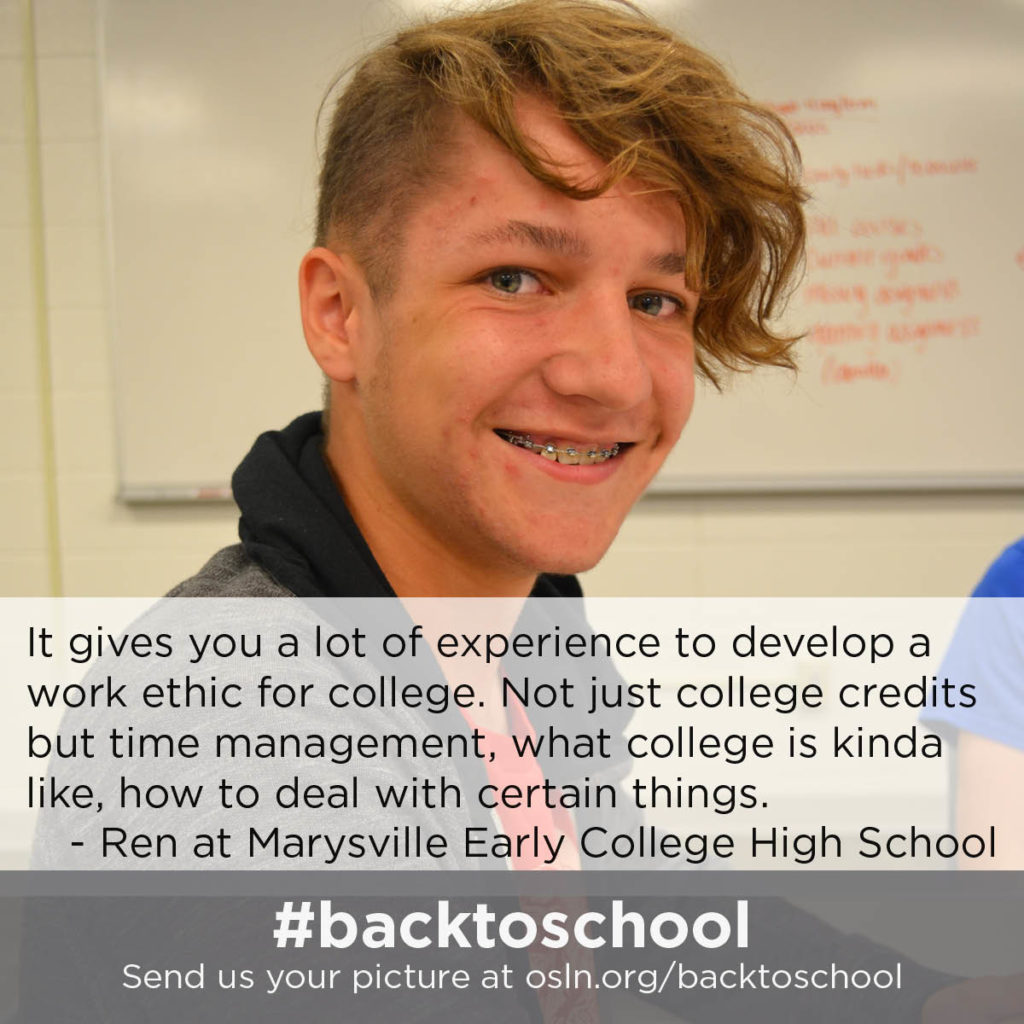A new academic year can be an exciting time for some students and an anxious one for others. And, as the newness wears off, all kids can become bored with their classes. How can teachers — and parents — help their students maintain an eagerness to go to school and to learn? To provide some insight, we contacted counselor Lisa Hinkelman, founder and executive director of the Dublin, Ohio-based girls’ empowerment program Ruling Our eXperiences and author of “Girls Without Limits: Helping Girls Achieve Healthy Relationships, Academic Success, and Interpersonal Strength.” She addressed back-to-school challenges for both girls and boys, and talked about her extensive research into girls’ issues:

Q: Tell us about your professional background and your interest in children’s education and development.
A: My work for more than 10 years as the founder of Ruling Our eXperiences (ROX), as a faculty member and researcher at Ohio State University and more than 15 years as a licensed counselor has helped inform and shape my work in education and in counseling.
These experiences have provided both the academic and research framework for how I approach my work, while the ongoing interaction with students, counselors, teachers, parents and administrators from diverse schools across the country provides a real lens into the ongoing personal and educational concerns and challenges facing students and families.
Q: This time of year, many children are excited about going back to school. How can parents and teachers take advantage of that excitement to further kids’ long-term engagement in their classes?
A: Students who are most excited to go to school are the kids who have a strong and positive connection to it, feel valued and appreciated at school and have friends or a peer group there where they are accepted by other students. Often the excitement of a new school year can quickly dissipate when school becomes a place that is unwelcoming, frustrating or hostile.
For girls, most say that the social environment of school is more difficult to navigate than the academic expectations. Girls report that dealing with “girl drama” and challenging friendships and relationships are of primary concern. When relationships are tumultuous, coming to school can be difficult.
Fostering effective relationships at school is more than having students be friendly with one another. It is creating school environments where students can grow emotionally and socially, where they get along with their classmates and where students know that their teachers and other adults within the school community genuinely care for them. When these things happen, students are likely to perform better behaviorally and academically.
When the culture of a school is positive and students are highly engaged and connected to school, their educational motivation, classroom engagement and attendance are all improved. If we expect students to be engaged learners, we must communicate to them that they are cared for, respected, welcomed and appreciated.
Students should know that the people who are charged with educating them are also caring for them. This often requires that teachers serve in helping roles beyond their responsibilities as content experts and develop enhanced interpersonal skills to improve the relationships that they have with students.
Q: What about the children who are shy or apprehensive about school, or feel pressure about their grades or just don’t like school? How can parents/teachers reassure them from the start and help them build positive feelings for their school?
A: Teachers and school staff are generally well-versed in ways to create academic motivation among students. By ensuring that class content is engaging, relevant and appropriately rigorous, educators create classroom environments where students can fully immerse themselves in learning.
However, it is often the social environment that is much more difficult to navigate for students. The expectations of academic performance can be more concrete than the expectations of the social scene, and these non-academic competencies can be more difficult to develop. Additionally, educators generally receive much less training on creating inviting schools and how to positively impact school climate than they receive on instruction and pedagogy.
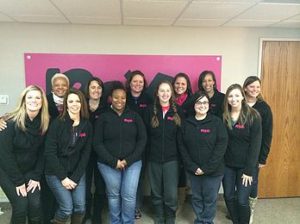
Positive feelings toward school develop because students perceive school as a safe place. This includes both physical and emotional safety. For some students who live in violent communities, school is a safe haven. It is one of the few places where they can let their guard down and be themselves. For others, coming to school is a nightmare because they experience incessant bullying and they don’t have positive relationships with peers or teachers.
For school staff, creating an inviting school starts with ensuring that each student is noticed and appreciated. Recognizing when a child is disengaged, missing classes or otherwise experiencing distress indicates that the staff is student-focused and paying attention to the needs of the whole child. It is the “invisible kids” who say that no one ever noticed if they missed class. No one at school ever called them by their name, and no one cared if they were there or not.
Classroom safety is also a top priority for students. Students want to be in classrooms where their opinions are valued and where they can take academic risks. When they know that the teacher will ensure that they are not ridiculed or made fun of for a wrong answer, students are more likely to engage in class discussions. Similarly, students want to be treated equitably across the board. They want to know that there are the same rewards and consequences for all students and no student will be unfairly singled out.
Small investments on the part of a school community can create an environment where students want to be and feel like they belong. It is connecting students with one positive person or thing at school that can be a difference maker.
For example, in many schools, school spirit is actualized through sporting events and pep rallies. Thus, connection to school is associated primarily with school athletics. For students who are not athletic, their academic, artistic, musical or other accomplishments are often second to the athletic accomplishments of their peers.
Creating opportunities to praise all types of student excellence is critical in creating a school environment where all students are valued and welcomed. This is why co-curricular programs, such as ROX, provide students with positive connections to school and a sense of belonging that is critical to student success.
Q: Are the feelings about starting a new school year generally different for boys and girls?
A: We know that self-esteem drops for girls from elementary school and middle school, and then again on to high school. It is also suggested that relationships, particularly interpersonal relationships and friendships, are considered more important for girls than boys.
Research also shows that girls use their relationships with one another to bully each other through exclusion, social construction of friendship groups, and through gossip and rumor spreading. We see this girl bullying/relational aggression begin to get intense for girls around 4th and 5th grade, and it is often at its highest point during middle school. Girls’ relationships can change from day to day, and they might find that the group they were “in” with one day, they are now on the “outs” with.
I have heard dozens of educators share that when they observe boys getting into fights or disagreements, they have it out — verbally and/or physically — and then are pals again the next day. Girls, however, might hold grudges for years and maybe even end a relationship on the basis of a disagreement.
While this sounds stereotypical, is not altogether untrue. Girls often have difficulty in communicating assertively with one another, and instead use covert tactics — such as gossip, rumor spreading and the social orchestration of friendships — to express their anger, frustration or displeasure.
When relationships are of primary importance to girls and they find that their relationships are chaotic or unhealthy, coming to school can be a terrible experience. Girls often view themselves within the context of their relationships with others. This is why helping girls develop effective communication skills in order to establish healthy relationships is a primary element of ROX programming.
Q: Tell us more about your research into issues affecting women and girls that led to ROX.
A: During graduate school and my early years as a faculty member, I was working as a counselor with both girls and with adult women. I quickly realized that the issues that the girls were facing were markedly similar to the issues that adult women were facing. Girls were experiencing low self-esteem and self-concept, difficulty in relationships with other girls, and challenges in dating relationships. The adult women whom I was working with were experiencing the same sorts of challenges!
I began in earnest to try to deconstruct the variables that impact girls’ self-esteem and confidence. I wanted to understand how girls develop strength and confidence. How do the experiences that they have shape their sense of self? And, ultimately, how can we expose girls to the information and experiences that will have a positive and lasting impact on their lives?
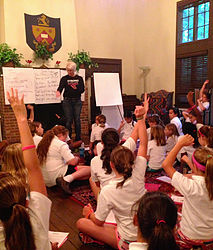
I had the opportunity to talk with girls who are incarcerated, who are homeless, who live in middle-class homes, and who live in mansions. I learned from girls who are in two-parent families, foster care, single-parent families, divorced families, and who live with their grandparents. I spent time listening to girls in very poor urban schools, middle-class suburban schools, elite independent schools, and low-income rural schools. Girls in public, parochial, private and charter schools participated in my research and shared their thoughts, feelings and opinions with me.
I learned is that there are vast differences among girls in regard to their experiences, their thoughts and their opinions. Girls’ knowledge of various topics is based upon the environment where they are raised. Depending upon what they have been exposed to, girls’ perceptions of the opportunities available to them can vary greatly.
But the one thing that continued to amaze me as I talked to more and more girls was that the fundamental issues that are facing girls are much more universal than they are different. While girls can have extremely different experiences based upon their socioeconomic status, race and ethnicity, sexual orientation, family composition, or mental health and ability, I have found that the experience of girlhood, while unique for every girl, looks amazingly similar for girls across the country.
Despite the vast differences between and among girls, the commonalities and shared experiences strongly outweigh the differences. Negotiating friendships and fitting in, experiencing insecurity about one’s body, managing dating relationships and sexual pressure, and dealing with the social, emotional, and cognitive changes of adolescence seem to be universal issues for many American teen girls.
Girls are under pressure and are at-risk for negative outcomes simply because they are female. Girls are more likely than boys to dislike their body, be on a diet, feel pressure to look sexy, experience sexual violence, have low self-esteem, experience depression and attempt suicide.
This is why I felt it was critically important to create school-based opportunities for girls to develop non-academic skills that they need for success in relationships and in life. Creating a co-curricular program, delivered in schools, provides students with access to information, skills and relationships that might not typically be addressed throughout academic course work. As an educator and counselor, I know it is imperative to focus on the whole child: their academic, personal, social and career development, and creating ROX was an opportunity to do this for girls.
Q: How does ROX programming work?
A: ROX is a 501(c)3 nonprofit organization that is focused on the health, safety, education and empowerment of girls. Our mission is to equip girls with the knowledge and skills needed to live healthy, independent, productive and violence-free lives.
We do this by delivering a 20-week, evidence-based empowerment program for adolescent girls that focuses on team-building, healthy friendships and relationships, effective communication, dating and sexual-violence prevention, body image, confidence and self-esteem, stress and coping, academic and career development, and leadership.
Our vision is to create generations of confident girls who can control their own relationships, experiences and decisions. We believe that we must simultaneously impact girls, educate and support the adult influencers in girls’ lives, and improve the societal conditions that have the potential to negatively impact girls. We have a multifaceted approach to our work in order to have a substantive impact. That is why we:
- Deliver evidence-based programming to girls.
- Educate teachers, counselors and administrators on issues impacting girls and on best-practices for educating and supporting girls.
- Help parents understand, support and connect with their daughters by delivering parent workshops and symposiums.
- Conduct ongoing research on the impact of our programming.
- Conduct research on the larger population of diverse girls to inform local, regional and national programs and policies.
We implement programming in small groups (10-15 girls) for an extended period of time (20 weeks). Research tells us that girls are more engaged in exploring difficult or personal issues when they are in a single-gender environment with a female facilitator. We also know that a small group format provides an opportunity for extensive learning and growth — much more than a classroom or an assembly can provide because the learning is student-centered, interactive and experiential.
Girls learn by actually trying out new skills. Each girl is engaged and participates fully as she is a key member of the team. Her voice, opinion and participation matter. Each lesson builds upon the previous one and provides opportunities for deep engagement and a safe and trusting environment.
Additionally, ROX is delivered only by trained and licensed facilitators — women who have degrees in counseling, social work and/or education and have completed a 22-hour ROX facilitator-training experience. Facilitators are equipped to effectively manage the group dynamics, help girls explore new information and ideas, draw out quiet members and safely help instill confidence and competence in girls.
The curriculum was developed using best practices in education and counseling and was designed to establish the conditions required for effective learning. Through ongoing research and curriculum updates, we also ensure that the program outcomes are maintained and that the lesson topics and content are timely, relevant and responsive to the reality of girls’ lives.
ROX programs operate in more than 100 schools in Ohio, Pennsylvania, Michigan, Kentucky, Florida, New Mexico and Guam.
Q: Tell us about your book, “Girls Without Limits.”
A: My goal in writing this book is to give a voice to girls who often feel that their thoughts and opinions are unheard and devalued. There are so many professionals, psychologists, teachers and authors who have been telling us what girls want, what girls need and what we should do with the girls in our lives, but few have taken the time to survey and talk to thousands of girls from many backgrounds.
I wanted to know: What’s going through girls’ minds? What do they dream about? What fills them with insecurity? What do they think are the big things going on in their lives that adults don’t understand? And, ultimately, what can we do to help them? I want to provide adults with a glimpse into the lives of girls, as described by the girls themselves, and offer concrete strategies for how adults can better understand, communicate with and motivate the girls in their lives.
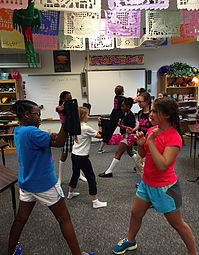
“Girls Without Limits” helps parents and other influential adults in their lives “get it” by developing a real understanding of what girls think and feel about their daily challenges. I wrote this book to give girls a voice because they often feel no one is paying attention to their thoughts and opinions.
Along with what girls say about their own lives, the book provides useful action strategies to help parents, educators, counselors and other adults in their lives listen to, communicate with and motivate them. The book provides activities, case studies, reflections and current research on various topics impacting girls, and each chapter ends with a section titled “What Can We Do?” that provides concrete strategies that can be immediately implemented with the girls in your life.
In “Girls Without Limits,” I combined the academic framework of an extensive, multi-year, quantitative and qualitative data collection with the relevant, compelling and heartfelt contributions of girls in elementary, middle and high school. I took the time to listen to what girls y have to say, and I allowed them to share their thoughts, feelings and experiences without judging them or telling them what to do.
In addition, I conducted interviews and focus groups with more than 100 teachers, parents and counselors about the challenges that they face in raising, educating and supporting girls. Then I worked to provide a context for adults to increase their awareness, inventory their behaviors and implement new strategies to be more communicative, empowering and effective in their interactions with girls.
This post is part of our series on back-to-school issues at Ohio schools, check out what students had to say in our interviews this fall.
